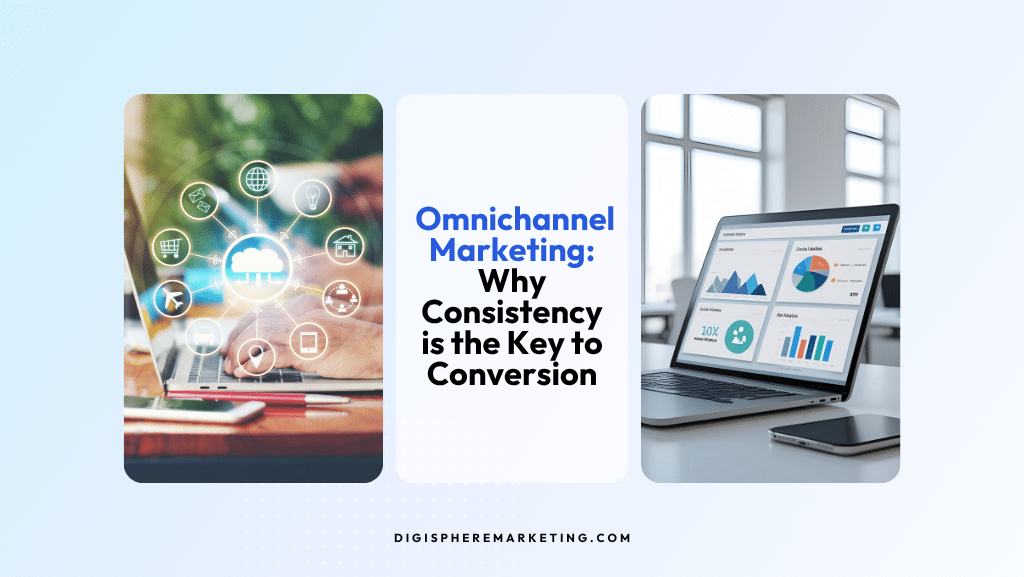In today’s digital world, customers interact with your brand across multiple touchpoints — from social media to email, paid ads, and your website. But here’s the catch: if those experiences feel disconnected or inconsistent, you risk losing their trust and their business.
That’s where omnichannel marketing comes in. Unlike multichannel strategies that simply use multiple platforms, omnichannel marketing ensures every channel works together to create a seamless, consistent customer journey, one that builds recognition, engagement, and conversions.
Let’s walk through how to create that cohesive experience, and why it’s more important than ever for your brand’s success.

1. Create a Unified Brand Voice and Message
Consistency starts with your brand identity. Whether someone finds you on Instagram, opens an email, or clicks an ad, they should immediately recognize your voice, tone, and style.
- Use the same visual elements: Your logo, color palette, fonts, and photography style should remain consistent across all platforms.
- Align your messaging: Keep your tone and messaging uniform, whether you’re promoting a product, sharing a blog, or announcing a sale.
- Maintain brand values across every channel: Customers want to feel a genuine connection with your brand, and that connection deepens through repetition and reliability.
When every touchpoint reflects the same message, your brand becomes more memorable and trustworthy.
2. Integrate Social Media, Email, Ads, and Website Experiences
Omnichannel marketing is about creating fluid transitions between platforms. Here’s how to align your key channels:
- Social Media: Use organic posts and paid ads to attract attention and drive traffic to your website or specific landing pages.
- Email Marketing: Reinforce your social and ad messaging with personalized content that nurtures leads and encourages return visits.
- Paid Ads: Retarget users who engaged with your brand on social or your website, using consistent visuals and language to strengthen familiarity.
- Website Experience: Make sure the website visitors land on matches what they saw in your ads or emails, from offers to visuals to tone.
Each channel should tell the same story in a way that naturally moves your audience closer to conversion.
3. Use Data to Personalize and Connect the Journey
Data-driven marketing is the foundation of an effective omnichannel strategy.
- Track customer behavior: Use analytics to understand how users move between social, email, and your website.
- Segment and personalize: Tailor content and offers based on user interests, browsing history, or purchase behavior.
- Leverage automation: Use tools like CRM systems and email workflows to deliver timely, relevant messages.
When every interaction feels personalized yet connected, your customers feel understood and more likely to convert.
4. Measure and Optimize for Consistency
Omnichannel success doesn’t happen by accident. It requires ongoing monitoring and refinement.
- Audit all channels regularly to ensure branding and messaging remain aligned.
- Compare conversion data across touchpoints to identify gaps in the customer journey.
- A/B test creative assets to discover which messages perform best across channels.
Consistency builds confidence, and confidence drives conversions.
Final Thoughts
In an age of endless digital noise, consistency is what makes your brand stand out. A seamless omnichannel marketing strategy ensures that every customer interaction — from their first click to their final purchase — feels connected, intentional, and trustworthy.
When your social, email, ads, and website work together in harmony, your brand doesn’t just reach more people, it converts more customers.
Ready to unify your marketing efforts? DigiSphere Marketing specializes in creating data-driven, consistent omnichannel strategies that turn browsers into buyers. Contact us today to learn how we can elevate your brand and drive measurable growth.





















